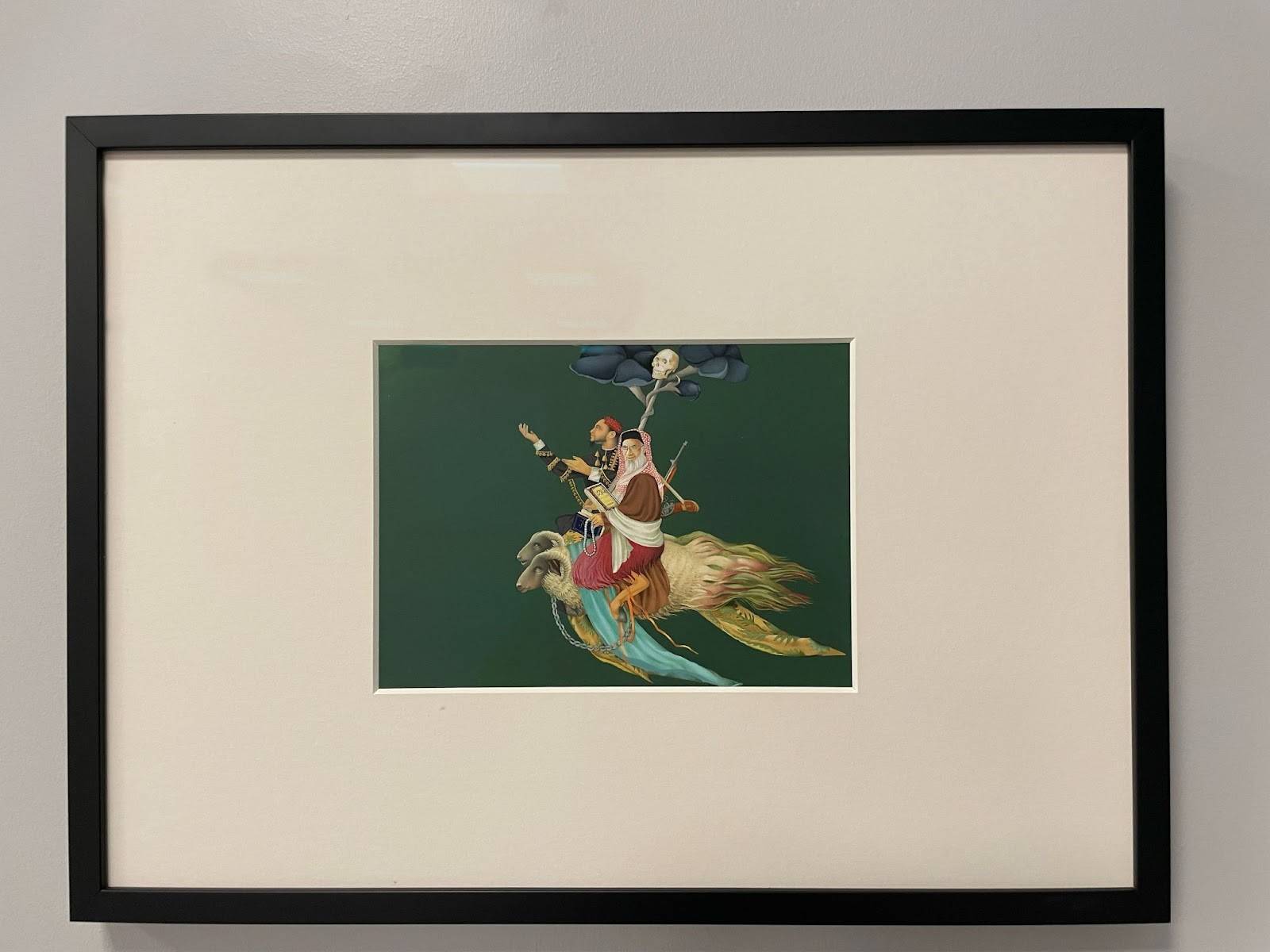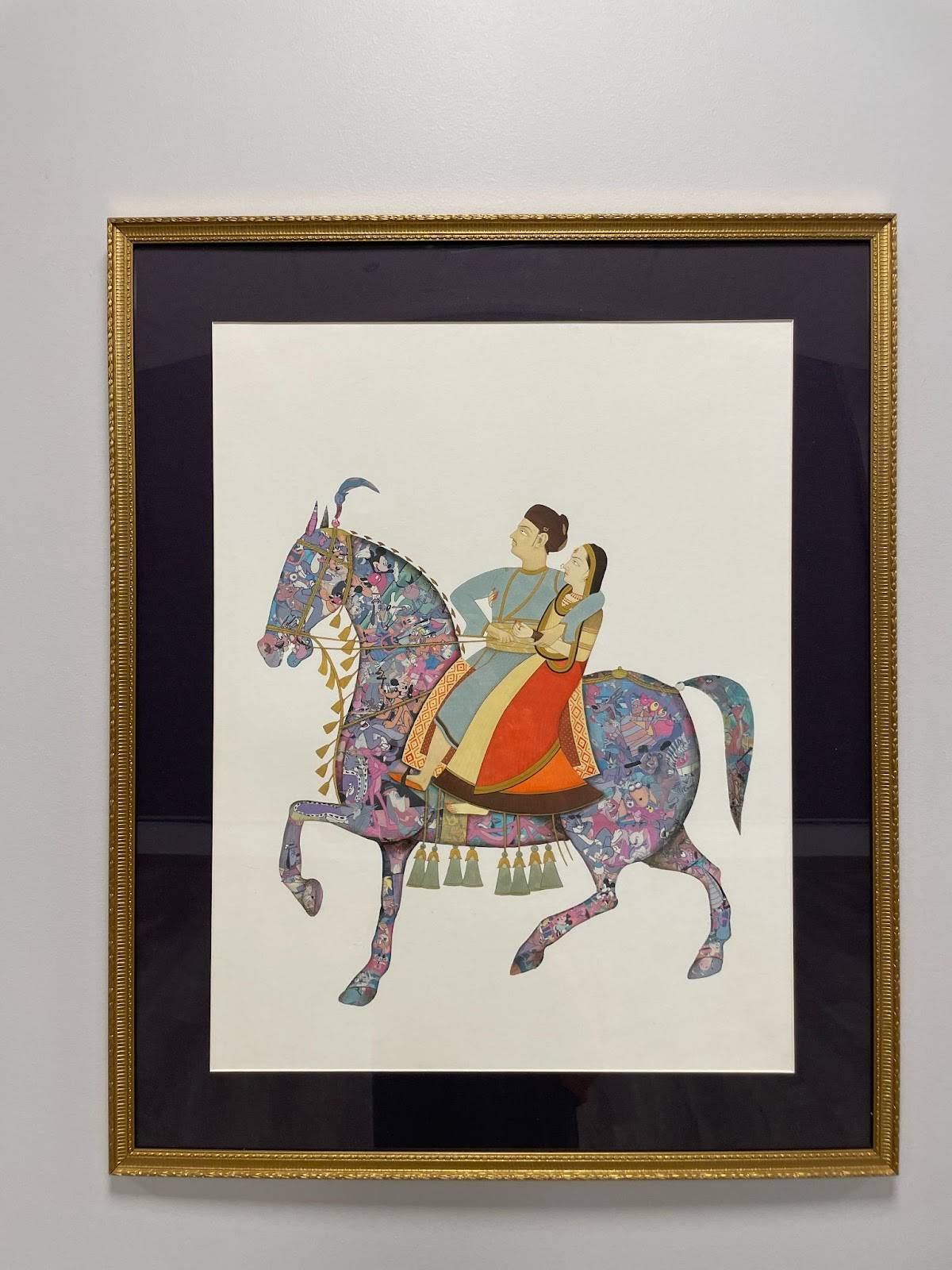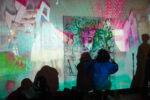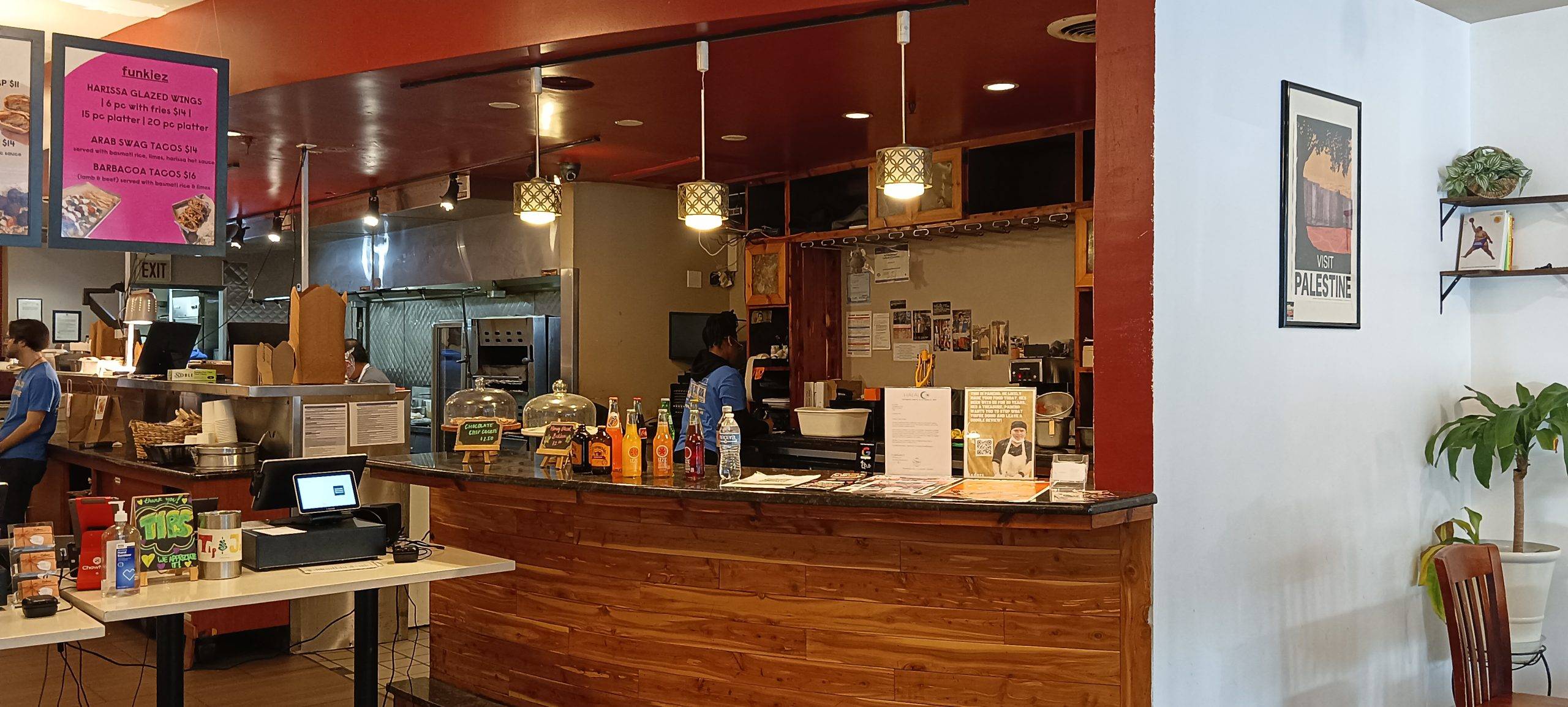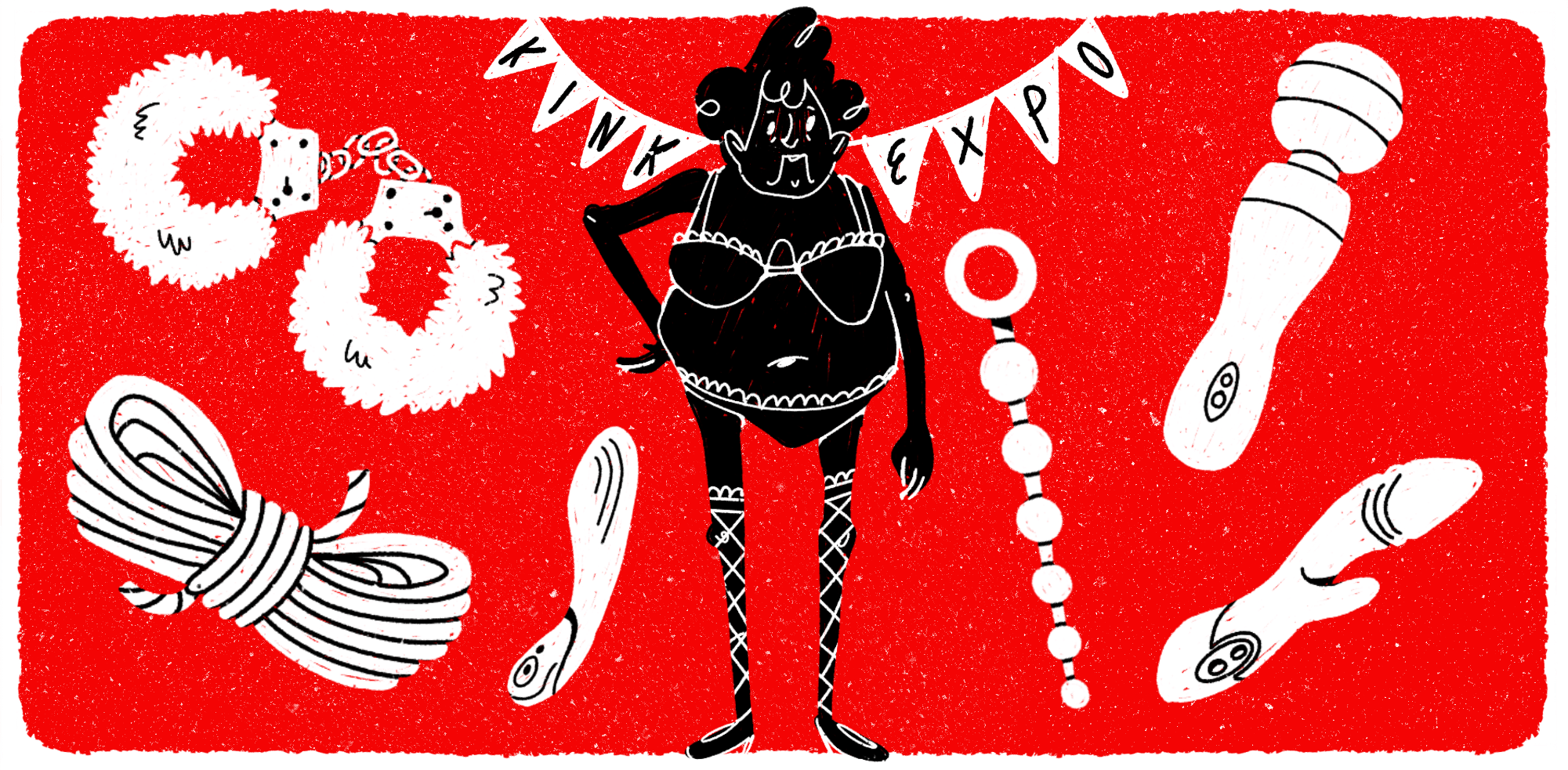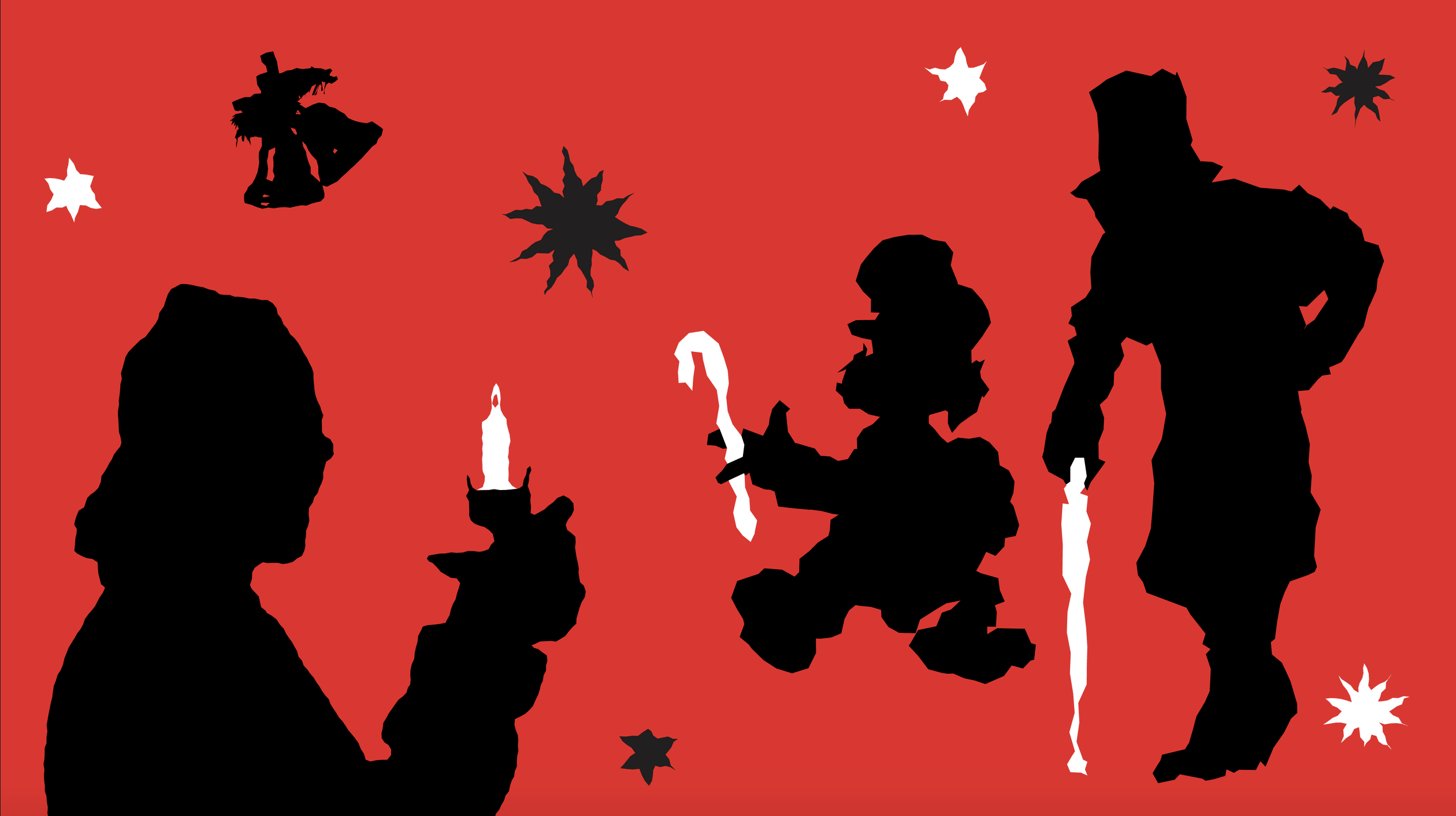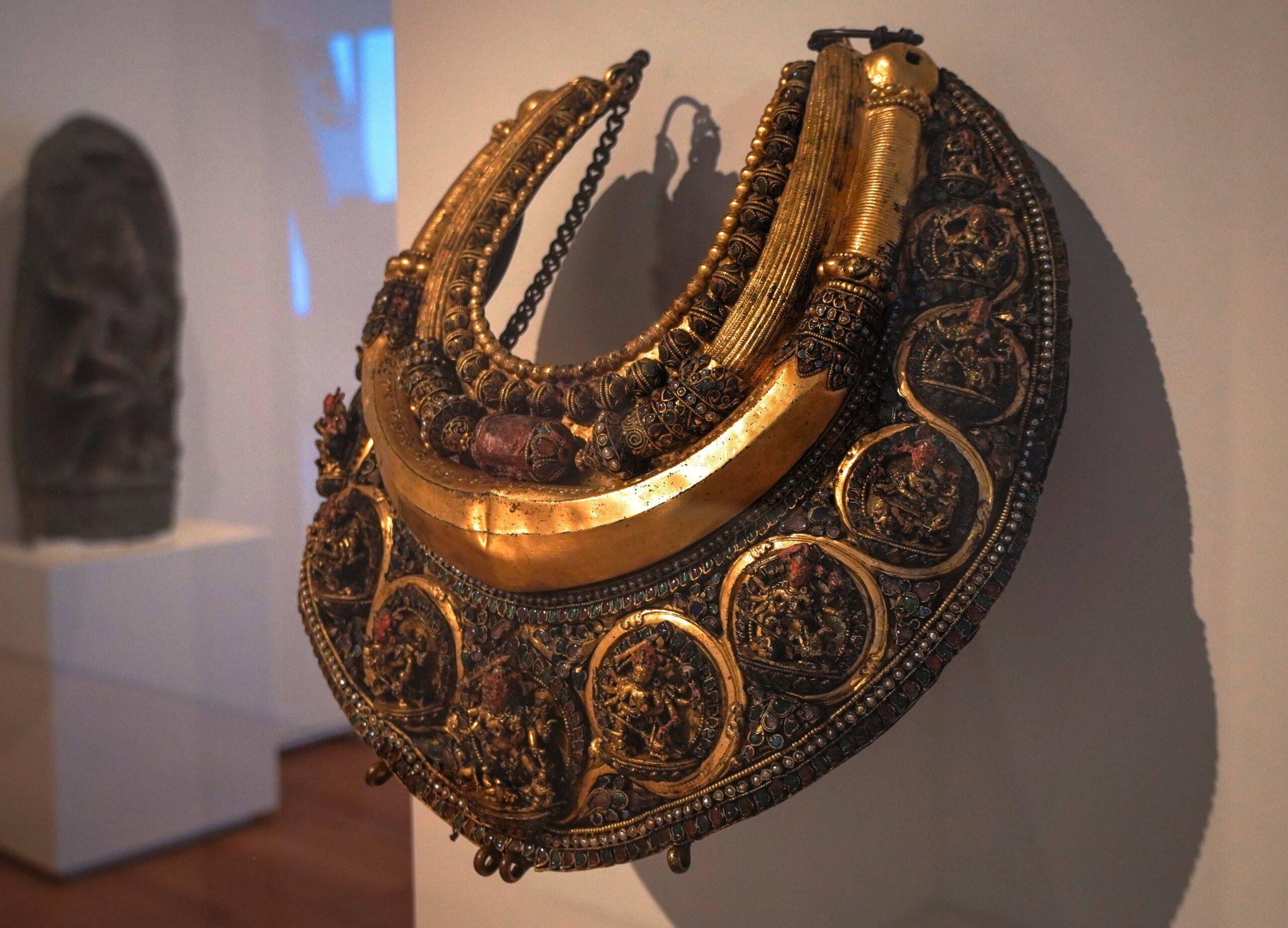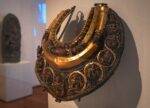The South Asia Institute (SAI) revamped its second floor with “Materials, Metaphors, and Miniatures” in September 2023 as its permanent exhibit. Andrea Moratinos (MAAP AH 2024) curated the exhibition with art from the Hundal collection owned by Shireen and Afzal Ahmed, the co-founders of the SAI. Most of the artwork was exhibited in 2020 during the “Old Traditions, New Narratives: South Asian Miniatures” exhibition celebrating South Asian miniature art. The 2023 rendition surveys how South Asian miniature art has evolved under different hands. Moratinos reimagines how previously exhibited traditional and contemporary miniature art fits into the current rendition.
Mughal miniature painting was developed during the Mughal rule between the 16th to the mid-19th centuries and is a remarkable artistic style that melded Persian and Indian influences. With subjects ranging from portraits and court scenes to nature and religious themes, Mughal miniature painting served both cultural and artistic purposes. The paintings involved detailed brushwork, vibrant colors, and small-scale illustrations on paper or cloth, resulting in exquisite depictions of various subjects.
Neo-miniature — initiated by a group of students at the National College of Arts of Lahore in Pakistan — aimed to revive the art form as it had previously extinguished. Traditional miniature art requires incredibly delicate strokes and expertise with wet blending and dry-brushing amongst other skills artists build over time. Neo-miniature art might not resemble traditional miniature painting in terms of material and techniques, but it inherits inspirations, references, and motifs from the tradition.
Moratinos divides the artwork layouts according to different themes by identifying various narratives like depictions of feminism to commentaries on orientalism. The first pieces titled “Flirting with Faith” (2016) and “The Crucible” (2021) on the long wall are by Saira Wasim. These works talk about the corruption that occurs when politics and religion intersect. The work depicts a mullah “religious leader” and a politician on flying sheep who are taking them to heaven. The politician — also a military representative — carries a human skull. This is a direct commentary on how politicians use religion to oppress those who disagree with them.
The narrative carries into the next two triptychs of paintings titled “God’s Best” (2010) and “Closer to God on Gold” (2017) by Faiza Butt. These paintings explore the female gaze and queer feminism. The juxtaposition of the two identifies the complexity of layering the themes of female gaze, politics, and gender with Western culture. Interestingly, such contemporary themes in Faiza’s work are composed with pardakht, a pointillist technique from the Mughal miniature paintings. “God’s Best” depicts hyper-masculine men on podiums, and on cakes, with the middle painting depicting a religious man, draped under a shroud. The two paintings on either side, with men depicted as trophies on a cake stand, contrast with the “man of faith” in the middle. But together they tell the truth about a patriarchal situation in Pakistan.
The narrative in “Closer to God on Gold” is a mix of queerness and hyper-masculinity. The paintings on either side are of pairs of men who are local pehlwans (wrestlers) caught in an intimate moment. The middle painting is solely a pair of feminine eyes that appear to be enjoying the scene.
Nusra Latif Qureshi’s work “Regal Blessings” (2009) presents traditional motifs-the Mughal dress, the cushions, and traditional jewelry-alongside symbols of power throne and the headgear-as a commentary on the relationship between the Mughals and the British colonists.
Asif Ahmed’s series titled “Similarities and Differences” (2014) reiterates the same caricature in 15 different ways. The series reimagines a misinterpretation of history. All of them are portraits of the same man, but by using different mediums and techniques to paint him Ahmed portrays the man’s differences in appearance.
The exhibited works collectively create a compelling narrative that explores different ways neo-miniature has branched out from its use of historical references.
Instead of presenting traditional miniatures and modernized versions side by side, Moratino presented the viewer with a gradual transition from neo-miniatures that are more modern to the ones that more resemble traditional miniatures. To appreciate contemporary artists’ attempts at confronting cultural inheritance, one needs background knowledge of classical miniature art because observing works outside of the original context hinders one’s appreciation of curatorial innovation. I am still not completely familiar with these backgrounds and thus I am acutely aware that my lack of background knowledge poses obstacles to my viewing experience. That’s not to say that I’m unable to enjoy it, I am encouraged to keep learning.
Collectors, Shireen and Afzal prefer to have one-on-one conversations with the artist when acquiring works. Hence, they have the opportunity to understand what the artwork represents. Most of the artist statements and work descriptions are direct quotations and sources from interviews and discussions with artists. These backdrops, though useful, might not provide sufficient background about miniature art’s history, politics, and tradition to viewers. Given the availability of these rich conversations, perhaps the curation could emphasize providing more information about the historical context of the art in the curatorial statement, and in the way the artworks are presented.
Moratinos’ curation is in opposition to viewers’ expectations, “If we’re talking about contemporary, let’s start with contemporary,” she said. She encourages visitors to learn about South Asian miniatures. In a nutshell: Despite the small exhibition space, Moratinos opens the door to allowing viewers to experience the historic continuum of miniature art.


